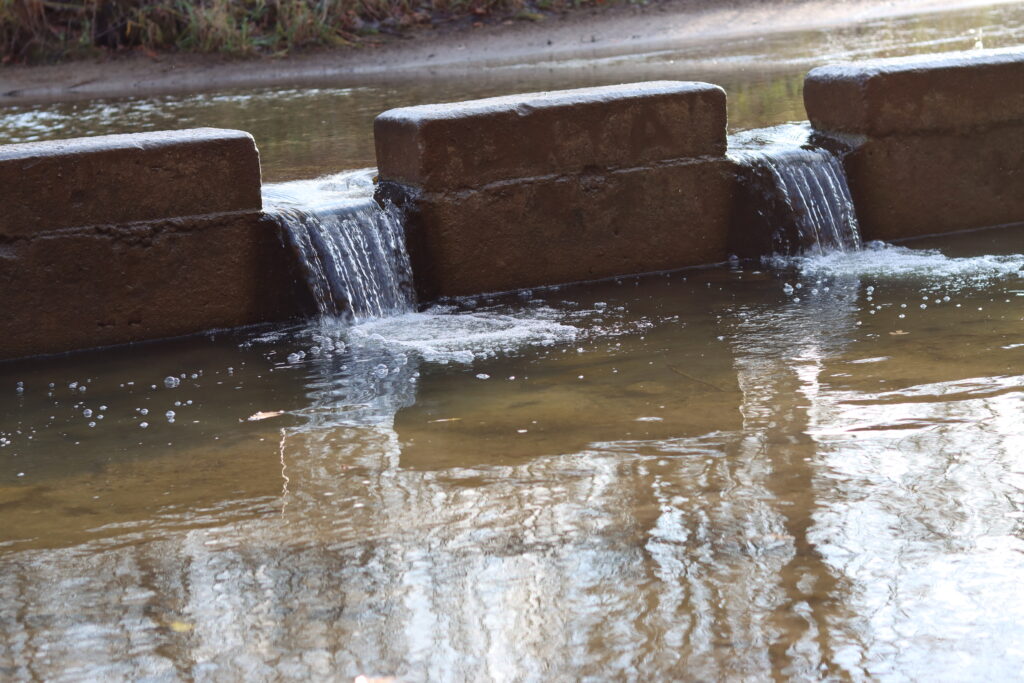
Water from Peas Creek flows over the road at Ledges State Park in Boone County on Nov. 16, 2024. (Photo by Cami Koons/Iowa Capital Dispatch)
A remarkably dry September and October sent Iowa into drought conditions that still cling to many of Iowa’s counties, despite decent rain from the end of October through November.
The recent improvements have been enough to ease some concerns of freezing streams and rivers and improve soil moisture conditions.
At its worst, towards the end of October, the U.S. Drought Monitor showed 51% of the state in severe drought conditions and 100% of the state in some level of drought.
The most recent, report from Nov. 19, shows significant improvements to drought conditions, with just over 2% of the state in severe drought, 60% in moderate drought conditions and nearly 7% of the state in no drought conditions.
Drought conditions have improved significantly since the end of October. (Maps courtesy of U.S. Drought Monitor)
Iowa precipitation levels in October were an inch less than normal levels, but from Oct. 27 through Nov. 25, the whole state logged above-average precipitation, according to the state climatologist.
The crop progress and condition report from Monday showed 66% of Iowa topsoil has adequate or better moisture, which is also a big improvement from that of a month prior.
While farmers welcomed the rain, it has limited their work, as they’ve only had three to four days suitable for field work each week.
A crop update newsletter from Iowa State University Extension and Outreach urged farmers to “carefully monitor moisture conditions” before resuming field work, to avoid compacting the soil.
GET THE MORNING HEADLINES.
In October, the Iowa Department of Natural Resources expressed concerns from the fisheries department of low stream flows through the winter months.
If Iowa streams and rivers don’t have enough water flowing through them during prolonged periods of freezing temperatures, it could cause fish to freeze to the bottom.
DNR Fisheries Biologist Scott Grummer said stream flows are still low in northwestern Iowa, but overall have improved.
“We’re still not probably what normally we should see this time of year, but they’re improving quite a bit,” Grummer said. “Otherwise we’d be in real dire straits.”
Grummer said the U.S. Geological Survey streamflow maps now show only a handful of streams that are at levels he would worry about. A month ago, he said there were quite a few streams that concerned him.

Grummer said while conditions have improved, it also depends on the type of winter Iowa has. Lower air temperatures will mean thicker ice and lots of snow can lower oxygen levels in the streams, which can also be bad for fish and other wildlife.
“It really comes down to the duration of winter and how cold it is,” Grummer said. “A lot of it just kind of depends on Mother Nature from here on out.”
YOU MAKE OUR WORK POSSIBLE.



